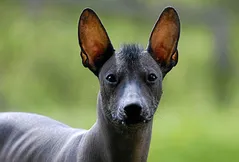
Pekingese
The Pekingese, a compact toy companion of regal bearing and a distinctive rolling gait, is spunky, lovable, protective and jealous.
Overall Status
| Height | 6 to 9 inches |
| Temperament | Affectionate, Loyal, Regal in Manner |
| Weight | Up to 14 pounds |
| Life Expectancy | 14 to 18 years |
| Coat Color | Black, Black and Tan, Brown, Gray, Red, White |
| Barking Level | Medium |
Quick Factors
| Playfulness | |
| Dog Friendly | |
| Exercise Need | |
| Grooming Needs | |
| Strangers Friendly | |
| Family Affectionate |
Daily Care
Grooming Tips
The Pekingese is high-maintenance in the grooming department. The coat needs to be brushed regularly with a small bristle brush, but the coat should be sprayed with water or a conditioning spray before brushing so that the hair does not break.The hair must be brushed all the way to the skin in order to remove dead hair, otherwise, tangles and mats will form. A metal comb should be used on the areas of the dog that are fringed, as they are the most prone to tangles. The hair on the feet should be trimmed in order to prevent the dog from getting foreign objects stuck in in the feet and also to prevent mats from forming there. Pekingese should be bathed once or twice per month, and a dry dog shampoo can be used in between baths to help keep the coat clean and healthy.The ears should be checked on a regular basis for signs of wax buildup, irritation or infection. Clean them with a cotton ball and a veterinarian-approved cleanser; never use a cotton swab in a dog's ear canal. Small dogs are prone to dental problems, so teeth should be brushed on a weekly basis to prevent tartar buildup, promote gum health and keep bad breath at bay. Trim nails monthly if the dog does not wear the toenails down naturally outdoors.
Exercise Tips
Toy dogs don’t require a lot of exercises, but they do require regular exercise. Make sure you take your dog on a regular walk and you shouldn’t have any problems with over or under-exercising.Pekingese are charming, confident companions who develop a close bond with their people. Their whole purpose in life is to amuse and comfort. Although they are fairly sedated most of the time and have only modest exercise requirements, they do enjoy participating in canine sports at their own pace.
Feeding Tips
A small dog, the Pekingese might try to goad you into giving it particularly rich or flavorful food – eggs, for example. But you can feed your doga normal diet and avoid spoiling them simply by refusing to capitulate to its wishes. It’s important to remember that the Pekingese is a small dog and requires a similarly small diet.They should do well on high-quality dog food, whether commercially manufactured or home-prepared with your veterinarian’s supervision and approval. Any diet should be appropriate to the dog’s age (puppy, adult, or senior). Treatscan be an important aid in training, but giving too many can cause obesity. Learn about whichhuman foodsare safe for dogs, and which are not. Check with your vet if you have any concerns about your dog’s weight or diet.Clean, fresh water should be available at all times.
Health Tips
The average life span of the Pekingese is 10 to 12 years. Breed health concerns may include brachycephalic upper airway syndrome, degenerative heart valve disease, patellar luxation, pododermatitis, intertrigo (facial fold), pyloric stenosis (adult-onset pyloric hypertrophy syndrome), congenital elbow luxation, odontoid process dysplasia, perineal hernia,intervertebral disc disease, hydrocephalus, atlantoaxial subluxation,entropion,keratoconjunctivitis sicca (“dry eye”),corneal ulceration, proptosis, achondroplasia (genetic dwarfism; accepted as a breed standard),cryptorchidism, trichiasis and ulcerative keratitis. The breed’s prominent eyes are prone to injury.
Trainability
A hallmark of the breed is their friendly, outgoing, loving personality. Pekes are affectionate and intelligent and develop very strong connections to their people.As dogs who for centuries lived in palaces, Pekes can be as serenely independent as the emperors who owned them. (They’re “opinionated,” Peke people often say.) Ever alert, they make good little watchdogs. Pekes might tolerate children, but are not appropriate for children to roughhouse with.
History
The Pekingese received its name from the ancient city of Peking, which is now called Beijing. They were considered sacred dogs regarded as a legendary Foo Dog that drove away spirits. They could only be owned by Chinese royalty and were regarded as semi-divine and if you stole one of these dogs you were put to death.People without noble rank had to bow to them. When an emperor died, his Pekingese was sacrificed so that the dog could go with him to give protection in the afterlife. In 1860 the British overtook the Chinese Imperial Palace. Chinese Imperial Guards were ordered to kill the little dogs to prevent them from falling into the hands of the "foreign devils." Five of the Pekingese survived and were given to Queen Victoria. It was from these five dogs that the modern day Pekingese descended. In 1893 the breed was first shown in Britain. The Pekingese was recognized by the AKC in 1906.






